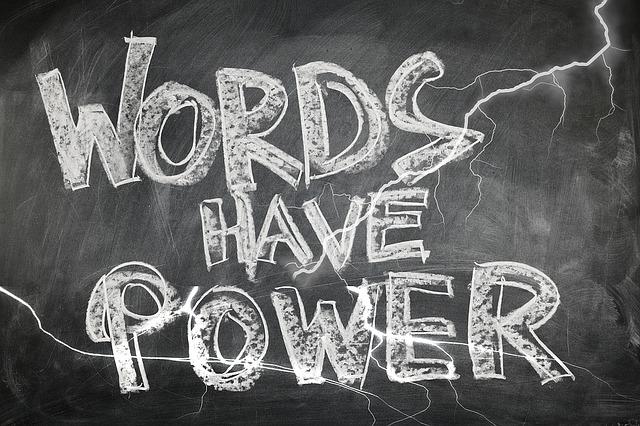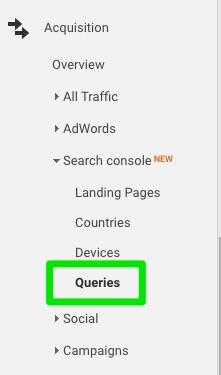We’ve heard the advice a thousand times:
Your headline is the most important part. It’s 80 cents of your dollar.
Visuals are key. Visitors want to see high quality photos, infographics, videos, charts, diagrams, memes, and more.
The user experience – or UX – trumps all else. It’ll be the key differentiator in the coming years, so make sure your user interface delivers an experience worth celebrating.
Rarely, though, do we hear about the copy itself. You know…the bulk of what’s on your page. The general wisdom reminds us to craft a kickass headline, include stunning visuals, and make it all about our visitors and customers.
Sound suggestions, all. But what about the words? When your conversion rates are lower than you’d like to see them, the culprit just might be some sub-standard copy.
What’s a Low Conversion Rate, Anyway?
That all depends on your point-of-view. Maybe you want to double your current conversion rate (CVR), maybe you want to see a steady upwards trajectory, or maybe you’d like to hit 2.5% and call it a day.
Tracking your CVR is important for everyone, but in order to label it as “high” or “low”, you need a little context.
You need the latest industry average. The only way to see how you’re doing overall is to compare yourself against others selling the same product or service. For example:
The most recent average ecommerce add-to-cart conversion rate is 8.7% globally, and 8% in the United States.
Adwords CVRs vary a great deal by industry:
- The overall average is 2.35%, while the top 25% convert at 5.31%, and the top 10% hit an impressive 11.45%.
- Legal? Median CVR is 2.07% and the top 10% sit at 6.46%.
- B2B? Median CVR of 2.23%, with the top 10% at 11.70%.
- Finance? Median CVR is 5.01%, but the creme de la creme see 24.48%.
To find yours, just conduct a simple Google or Bing search. Have a SaaS business, for example? Google “average CVR SaaS” (or something comparable). Just be sure to select “Past year” or even “Past month” under Tools > Any Time to get the most recent benchmarks.
If you’re under the average, your CVR is very low. If you’re below the top 25%, your CVR is still low (no one aims for average, right?).
At a minimum, you should be optimizing to be in that top 25%, with your eye on joining the Top 10% Club down the road.
If you’re falling short, it’s time to consider the copy conundrum.
Words, Words, Words
Words matter, and not just in your headline, headers, and subheaders. The copy on the page can send your CRV tumbling faster than a circus gymnast.
Words set the tone and help cement how your customers see your brand. Copy needs to be informative, error-free, well written, descriptive, persuasive, and emotional.

Yeah, visitors want to see a professional website theme, vibrant images, complimentary color scheme, and an intuitive user interface. They expect a streamlined and engaging experience.
But to believe that words are not part of that is misguided at best, and disastrous at worst.
A thorough polish and buff of the copy helped Invesp improve conversion rates by 90%. And that’s just one example.
Low conversion rate? Take my advice, and give your copy a once-over today.
Remember Your Customer
This is just good business advice, full stop. A fully realized buyer persona (or two) allows you to craft your marketing specifically for your audience…and that includes your copy.
Consider their demographics, wants, needs, fears, interests, and preferences. Who are they, what do they want, and where can you reach them?
The words and vocabulary you’d use for stay-at-home parents is very different from what you’d use with mid-level execs at a tech company, or long-distance truckers, or tweens and teenagers.
Your copy must speak to your customers…so make sure you a) know who that is, and b) use the language they use. Does your copy do that? If not, fix it. Right now.
Lights, Camera, Power, and Action
All words are created equal, but some words are more equal than others.
Ordinary, boring copy is a conversion killer. If your customers and prospects fall asleep while reading it, what chance do you have to sell them?
Any web copy that resonates does so because it walks a very fine line: conversational in tone, but liberally sprinkled with both power and action words.
Power words get attention. They forge a connection with the reader, leading them from one emotional touchpoint to another (and they may be either positive or negative). They’re dynamic, often carrying additional implied or understood connotations. They appeal on a visceral level. Power words are carefully chosen to elicit a particular response in the reader.
That’s the kind of attention to detail that your copy deserves.
In marketing, popular power words include you, your, free, easy, save, guarantee, new, because (people love a reason), improved, scientifically-proven, and unique.

Need a few more? How about 317 more power words arranged by category (fear, anger, inspiring, lust, and more)? I aim to please.
Beyond using power words and phrases, you also need to include action words. You want your readers to do something, right? Sign-up, download, purchase, subscribe, whatever.
And they want to see that your product or service does something, too. Solves a problem. Scratches an itch. Fulfills a need. Satisfies their desire.
German company L’Axelle increased conversions by 93% simply by making their copy more action-oriented.
Get them to take action with a CTA that clearly indicates what they get out of the exchange (giving you their contact details, or buying your product). What’s in it for them?
Action. Words. Use ‘em.
Let’s sum up: your copy needs to be conversational, it needs both power and action words, and an explicitly-stated, compelling call-to-action is a must.
Does your copy hit all those checks?
And don’t forget to do some research into the keywords you’re using and targeting. You want keywords with decent search volume, more transactional than informational, and you’ll want to integrate long tail keywords into your copy.
Get Emotional
This is really just an extension of the power and action words directive. Your copy must get an emotional response from your readers. It’s up to you to decide what that emotion should be: some targets respond better to fear (especially FOMO), others to pride, still others to humor, and so on.
But – and this is the “if you remember only one thing, remember this” moment – all consumers buy for emotional reasons. It’s just how we’re wired.
It’s only after making that emotional decision to purchase (or subscribe, or download) that we go looking for logic to justify it.
People convert for emotional reasons. So give them some. Identify the emotion that is going to best resonate with your audience and use it in your copy.
Speak of benefits to them first (emotion), and then list the features later (logic).
Use the Six Weapons of Influence
That said, emotion alone is not always enough. Your words need to be persuasive.
Enter Robert Cialdini’s six weapons of influence.
In his landmark book Influence: The Psychology of Persuasion, Cialdini identified six tactics that work to persuade and motivate us to action:
- Reciprocation – give them something for nothing, and they’ll feel indebted to you.
- Commitment and Consistency – get them to agree or commit to something small early on, and it’s easier to get them to do something bigger down the road.
- Social Proof – reviews, testimonials, subscriber counts, endorsements, and units sold put people at ease because they see that others already know, use, and trust you.
- Liking – stay positive, and mirror the language of your readers…they’ll like you more, and people are influenced more by people they like. Want a quick shot in the arm? Go to Acquisition > Search console > Queries on the Google Analytics dashboard for a list of words that are bringing in traffic. Then, use those exact terms and phrases in your copy.

- Authority – include expert opinions, statistics, numbers, specifics, and details in your copy to demonstrate your authority in your industry or niche.
- Scarcity – limited numbers and time-sensitive savings create scarcity and the fear of missing out on something, and that’s a powerful motivator (just don’t abuse this one).
Using one or more of these strategies can strengthen your copy immensely. But be careful: they’re not called “weapons” for nothing. Abuse them, or use them to manipulate, and people will eventually catch on. Be genuine and sincere for maximum effect.
Persuasion is all about identifying their need or desire, and then fulfilling it. What brings them to you? How can you help?
Use a Battle-tested Formula
Good copy stands on the shoulders of giants. They are many tried and true formulas for creating copy that converts. AIDA (attention-interest-desire-action) is one. The Four Ps (Promise-Picture/Paint-Proof-Push) is another.
And there are others.
Find one that appeals to you, and rework your copy to follow that formula. Cut, add, and revise to make it fit. These templates survive because they’re successful and consistently get the job done.
Why reinvent the wheel if you don’t have to?!
Remove the Friction
People are wary. They have a lot of choice. The internet can be an unscrupulous place. Your product may be the solution they’ve been searching for, but they’re still probably a bit hesitant.
You’ve got to put them at ease. Your copy should allay all their fears and reluctance and resistance.
Get rid of the reservations they may have by including reviews and testimonials, offering free shipping and a money-back guarantee, rewriting your value prop (The Sims experienced a 128% conversion rate lift with just this one tweak alone), and/or highlighting social proof and other trust indicators.
In other words, remove all friction and make it a smooth slide all the way to conversion. Show them precisely why they can trust you, why you’re the ideal solution to their problem or desire, and how you’re better than your competition.
There are many, many things you could tweak and revise to improve your CVR. Just don’t ignore your copy.
Check out these 61 examples of web copy written with conversions in mind for inspiration. Look to those already pulling it off to guide your own efforts.
Your copy too often takes a back seat to other elements. Put it back in the driver’s seat where it belongs.
Have you recently given your copy a holiday makeover? What sort of return did you get? Leave your comments below:
About the Author: Aaron Agius, CEO of worldwide digital agency Louder Online is, according to Forbes, among the world’s leading digital marketers. Working with clients such as Salesforce, Coca-Cola, IBM, Intel, and scores of stellar brands, Aaron is a Growth Marketer – a fusion between search, content, social, and PR. Find him on Twitter, LinkedIn, or on the Louder Online blog.
from The Kissmetrics Marketing Blog https://blog.kissmetrics.com/low-conversion-your-copy/
No comments:
Post a Comment